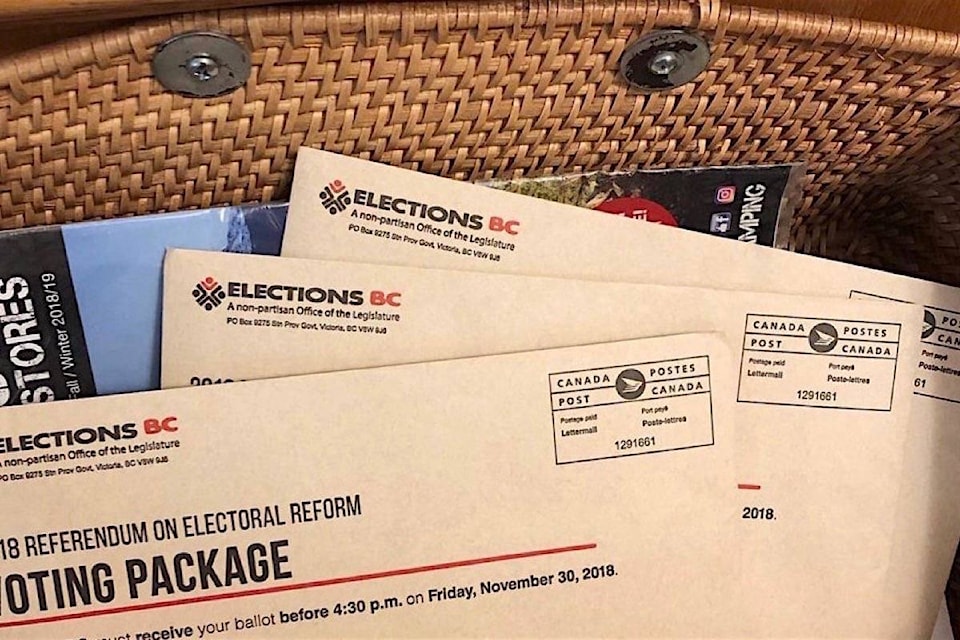Unlike the collective vote to keep B.C.’s election voting system status quo - the West Kootenay was actually in favour of a change to Proportional Representation (PR) from the current First Past the Post voting system.
Results from the Referendum on Electoral Reform were released late Thursday, and show 7,000 votes in favour of PR in Kootenay West, or about 52 per cent. Similarly, the Nelson-Creston riding had 8,165 electors voting in-favour of PR, or 57 per cent.
On the other side mountain in Kootenay East, however, the viewpoint was markedly different.
Of the 12,567 votes cast, almost 72 per cent were in favour of keeping the current First Past the Post System.
It’s all moot now of course, because across B.C. just over 61 per cent of the electorate body, or 845,235 people chose to keep First Past the Post.
In total, 1,378,753 votes were cast. Most in favour of keeping elections the same was Peace River North with 86.4 per cent of the electorate choosing First Past the Post. Whereas Vancouver-Mount Pleasant had the lowest votes cast for it, or about 26 per cent.
The referendum offered a choice between the traditional first-past-the-post voting system, essentially a separate election for each of B.C.’s 87 provincial seats, and three variations on proportional representation to make the number of seats match more closely with the party’s share of the province-wide vote.
Of the three proportional representation options, mixed member proportional was supported by 41.24 per cent of those who chose to answer question two on the mail-in ballot. Dual member proportional and rural-urban proportional each received just under 30 per cent.
The referendum cost about $15 million to stage, with more than four million ballot packages mailed out to registered voters. The final turnout was 42.6 per cent ballots returned.
Opposition critics blasted the NDP for giving Attorney General David Eby the task of developing the options, rather than a citizens’ assembly as was the case with referenda in 2005 and 2009 that offered a single transferable ballot system and were defeated.
This referendum also differed from earlier ones by having no minimum turnout and no regional weighting to ensure that urban areas in the southwest didn’t decide the issue.
“This was a flawed process from the beginning as the NDP stacked the deck to satisfy the Green Party and remain in power,” B.C. Liberal leader Andrew Wilkinson said.
Premier John Horgan issued a statement, and left response up to Finance Minister Carole James.
“While many people, myself included, are disappointed in the outcome, we respect the people’s decision,” Premier John Horgan said.
B.C. Green Party leader Andrew Weaver echoed Horgan’s disappointment.
“The B.C. Greens remain committed to the principle of representative democracy,” Weaver said.
